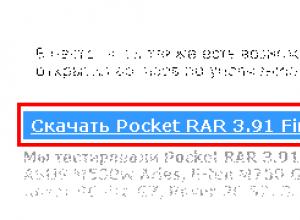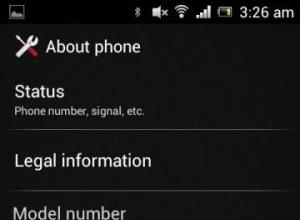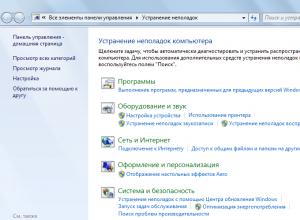Speeding up your computer: how to increase PC performance. Speeding up your computer: how to increase PC performance How to make Windows boot quickly
This instruction will talk about methods that will be useful for speeding up your computer startup, even loading the desktop specifically for Windows 7 ( although they will fit other versions as well). Many users are annoyed by long loading times, especially often on older systems with weak specifications.
I'll start with the simpler methods and end with the more complex ones. Each action will be accompanied by a picture for clarity.
Cleaning your desktop
- To do this, remove unnecessary shortcuts and folders from it ( for example, combine several folders into 1).
- Disable background art. Can be replaced with a simple color, such as black.
To change the background, go to Start >> Control Panel >> Appearance. Next to the "Display" category, click on "Change Desktop Background" as shown below.
In the window that appears, select solid colors and save your changes.

Disabling the loading screen
Every time you start your computer, you've probably noticed a screen with the Windows logo and a loading bar. Instead, you can make the screen black and the computer will not waste time displaying graphics.
To do this, go to the Start menu >> Run or press Win + R. Enter the msconfig command.

Now go to the download tab and check the box “Without GUI” as shown in the image.

Do not close this window. You will need it in the next method.
Startup programs
Now you need to disable programs that start with the system. This will significantly speed up the computer startup.
Go to the startup tab and uncheck all applications if possible.

Using all processor cores
Typically, by default, the computer starts using 1 core. If you enable all cores at startup, performance will increase noticeably.
Attention! Before doing this, it is advisable to make a system restore point. Some users are having trouble turning on their computer.
Again in the system configurations from the boot tab, go to advanced options ( having previously selected the OS used).

Here, check the box next to the number of processors and select the largest number. I have 2, but you may have 4, 8 or even more.

Disk Defragmenter
Changes the location of files on disk ( only physically, virtually all your files will remain in their places) and due to their sequential arrangement, their launch speeds up.
In this case, its execution will only be required for the system disk where the Windows 7 files are installed ( usually drive C) and for system files.
I recommend using the free Defraggler program. Download it and install it. Select the system disk and defragment it.

Now here you need to do the same thing, but with system files.

It will start the next time you start the computer.
Has your computer started up faster?
Poll Options are limited because JavaScript is disabled in your browser.
It happens that when loading the operating system it takes a very long time to start or does not start as quickly as the user would like. Thus, his precious time is lost. In this article, we will identify various ways to increase the startup speed of the operating system on Windows 7.
You can speed up the startup of the OS either with the help of specialized utilities or by using the built-in tools of the system. The first group of methods is simpler and is suitable, first of all, for not very experienced users. The second one is suitable for those users who are accustomed to understanding what exactly they are changing on the computer.
Method 1: Windows SDK
One of these special utilities that allows you to speed up the startup of the OS is developed by Microsoft - Windows SDK. Naturally, it is better to use such additional tools from the system developer itself than to trust third-party manufacturers.
- After you have downloaded the Windows SDK installation file, run it. If you do not have a special component installed that is necessary for this utility to work, the installer will offer to install it. Click "OK" to proceed to installation.
- The Windows SDK Installer welcome window will then open. The interface of the installer and the utility shell is in English, so we will describe the installation steps in detail. In this window you just need to click on "Next".
- The license agreement window appears. To agree with it, set the switch in the form of a radio button to the position. "I agree" and press "Next".
- Then you will be asked to specify the path on your hard drive where the utility package will be installed. If you do not have a serious need for this, then it is better not to change these settings, but simply click "Next".
- Next, a list of utilities to be installed will open. You can choose those of them that you consider necessary, since each of them has significant benefits when used correctly. But to achieve our specific goal, we only need to install the Windows Performance Toolkit utility. Therefore, we uncheck all other items and leave only the opposite "Windows Performance Toolkit". After selecting the utilities, click "Next".
- After this, a message opens saying that all the necessary parameters have been entered and you can now proceed to download the utility from the Microsoft website. Click "Next".
- Then the download and installation procedure begins. There is no need for user intervention during this process.
- After the process is completed, a special window will open notifying you of its successful completion. This should be indicated by an inscription "Installation Complete". Uncheck the box next to the inscription "View the Windows SDK Release Notes". After this you can click "Finish". The utility we need has been successfully installed.
- Now, in order to directly use the Windows Performance Toolkit in order to increase the OS startup speed, activate the tool "Run" by pressing Win+R. Enter:
xbootmgr -trace boot –prepSystem
Click "OK".
- After this, a message will appear telling you to restart your computer. In general, during the entire period of the process, the PC will be rebooted 6 times. To save time and not have to wait for the timer to expire, after each reboot, in the dialog box that appears, click "Finish". Thus, the reboot will occur immediately, and not after the end of the timer report.
- After the last reboot, the PC startup speed should increase.
- To go to the Service Control Center, click "Start". Then press "Control Panel".
- In the window that appears, click on "System and safety".
- Next go to "Administration".
- In the list of utilities located in the section "Administration", find the name "Services". Click on it to move to "Service Manager".

IN "Service Manager" You can get there in a faster way, but for this you need to remember one command and a combination of “hot” keys. Type on the keyboard Win+R, thereby launching the window "Run". Enter the following expression:
Click Enter or "OK".
- Regardless of whether you acted through "Control Panel" or tool "Run", a window will open "Services", which contains a list of running and disabled services on this computer. Opposite the names of running services in the field "State" value set "Works". Opposite the names of those that are launched along with the system in the field "Startup type" worth the value "Automatically". Carefully study this list and determine which services that start automatically you do not need.
- After that, to go to the properties of a specifically selected service to disable it, double-click with the left mouse button on its name.
- The service properties window opens. This is where you need to perform manipulations to disable autorun. Click on the field "Startup type" which currently contains the value "Automatically".
- Select an option from the drop-down list "Disabled".
- Then click on the buttons "Apply" And "OK".
- After this, the properties window will be closed. Now in "Service Manager" opposite the name of the service whose properties were changed, in the field "Startup type" there will be a value "Disabled". Now, when Windows 7 starts, this service will not start, which will speed up the loading of the OS.
- Go to your computer's BIOS. To do this, when loading it, press the key F10, F2 or Del. There are other options. The specific key depends on the motherboard manufacturer. However, as a rule, the key indication for entering the BIOS is displayed on the screen when the PC boots.
- It is impossible to describe further actions after entering the BIOS, since different manufacturers use different interfaces. Nevertheless, we will describe the general algorithm of actions. You need to go to the section where the order in which the system boots from various media is determined. This section is called on many BIOS versions). In this section, put booting from the hard drive first. For these purposes, the clause is often used "1ST Boot Priority", where the value should be set "Hard Drive".










Method 2: Cleaning startup programs
Adding programs to startup has a negative impact on the speed of computer startup. This often happens during the installation procedure of these programs, after which they are automatically launched when the computer boots, thereby increasing its execution time. Therefore, if you want to speed up your PC boot, you need to remove from startup those applications for which this feature is not important to the user. After all, sometimes even those applications that you haven’t really used for months are registered in startup.

But programs can be added to startup not only through the registry, but also by creating shortcuts in the . Using the system configuration option described above, such software cannot be removed from autorun. Then you should use a different algorithm of actions.


You can also remove other unnecessary shortcuts from the folder in the same way. Windows 7 should now start up faster.
Method 3: Disable autostart services
No less, and maybe even more, the system’s startup is slowed down by its various services that start when the computer starts operating. Similar to how we did this with regard to software, in order to speed up the startup of the OS, you need to find services that are of little use or useless for the tasks that the user performs on his computer, and disable them.










But it is worth saying that if you do not know what a particular service is responsible for or are not sure what the consequences of disabling it will be, then manipulating it is strictly not recommended. This can cause significant problems in the operation of the PC.
At the same time, you can read the lesson materials, which tell you which services can be turned off.
Method 4: Cleaning the system
Cleaning the system of “garbage” helps speed up the startup of the OS. First of all, this means freeing the hard drive from temporary files and deleting erroneous entries in the system registry. This can be done either manually by clearing temporary file folders and deleting entries in the registry editor, or using specialized software tools. One of the best programs in this direction is CCleaner.

Details on how to clean Windows 7 from garbage are described in a separate material.
Method 5: Using all processor cores
On a PC with a multi-core processor, you can speed up the computer startup process by connecting all processor cores to this process. The fact is that by default, when loading the OS, only one core is used, even if you are using a multi-core computer.

Method 6: BIOS Setup
You can speed up OS loading by configuring the BIOS. The fact is that often the BIOS first checks the ability to boot from an optical disk or USB drive, thus wasting time on this every time. This is important when reinstalling the system. But, you must admit that reinstalling the system is not such a frequent procedure. Therefore, to speed up the loading of Windows 7, it makes sense to cancel the priority check for the ability to launch from an optical disk or USB drive.
After you save the results of the BIOS setup, the computer, in search of an operating system to boot, will immediately turn to the hard drive and, having found it there, will no longer poll other media, which will save time on startup.
Method 7: Hardware Upgrade
You can also increase the boot speed of Windows 7 by upgrading your computer hardware. Most often, a loading delay can be caused by a low hard drive speed. In this case, it makes sense to replace the hard drive (HDD) with a faster analogue. And it is best to generally replace the HDD with an SSD, which works much faster and more efficiently, which will significantly reduce OS loading time. True, SSDs also have disadvantages: high price and limited number of write operations. So here the user must weigh the pros and cons.
It's often just a matter of time before your Windows computer starts to slow down. As a rule, the culprit is a gradually filling hard drive, on which there are programs that automatically launch along with the operating system. In addition, do not forget about the increasing fragmentation of system files.
What we work with:
>Windows
The launch optimization described here is suitable for versions 7, 8/8.1 and 10.
>Software Development Kit
The Xbootmgr utility we need is included in Windows Performance Analyzer, a component of the Windows SDK.
> Magnetic hard drive
Optimization using the Prefetching function only works on computers with magnetic disks.
For a long time now, Windows has implemented the function of automatically defragmenting the hard drive. Every time you don't use your computer for a while but leave it on, the system begins to optimize itself. At the same time, Windows not only consolidates individual elements so that they boot faster, but also moves important system files to the edge of the hard drive.
Prefetching as a System Accelerator
Prefetching is responsible for ensuring that Windows, when the computer starts, loads important files into much faster RAM before they are needed. For optimization, however, you should “instruct” the system which files it should mark as “important”. We will tell you exactly how to do this using the Microsoft Xbootmgr utility in this article.
Xbootmgr speeds up the startup process in two stages: in the first, the utility automatically defragments boot files and rearranges them. On the second, you can perform detailed optimization, in which Xbootmgr analyzes the system during multiple reboots. Based on this data, the utility tells you in what order it is best to save the files necessary to start the OS.
At the intersection of the “Post Boot” line and the “End Time (s)” column of this analysis program, you will find out how long it takes to boot your computer. On our system it lasted 24.3 seconds
Xbootmgr is included in the Windows Performance Toolkit, which in turn is part of the official Software Development Kit (SDK). However, you are not required to install the entire SDK. It is enough to select the necessary options during installation.
The results achieved with Xbootmgr depend on how well Windows has already optimized your PC. Computers with magnetic disks can then start up in 30 seconds - meaning the interval between turning on and the moment when you can actually work on the system. But even if the boot takes less than a minute, Xbootmgr still gives a noticeable speedup: for example, our test computer initially started in 24.3 seconds, then in 20.9.
Preparing for system optimization
 Preparing Windows
Preparing WindowsFor Xbootmgr to speed up your computer, the Prefetcher and Superfetch functions must be enabled in both the registry and Windows Services
First, check the registry to see if prefetching is active and if the corresponding Windows service is running. To do this, press the “Win + R” keys and enter “regedit”. Now in the registry, navigate to the key “HKEY_LOCAL_MACHINE\SYSTEM\CurrentControlSet\Control\SessionManager\Memory Management\PrefetchParameters”. On the right side of the window, double-click on the DWORD value “EnablePrefetcher” and set it to “3”. Repeat the procedure for the "EnableSuperfetch" parameter.
After this, make sure that the Windows “Superfetch” service is enabled. Click on "Win+R", but now enter "services.msc". After the “User Account Control” question, the “Services” window will open. Find the line "Superfetch" and double-click on it. You will see "Properties: Superfetch". On the General tab, make sure that Startup Type is set to Automatic. Under “Status” there should also be “Running”. Otherwise, click on “Run”. After making changes, restart your computer.
Download Windows SDK
 The multi-gigabyte Windows SDK requires only the lightweight Windows Performance Toolkit (130 MB) to be downloaded.
The multi-gigabyte Windows SDK requires only the lightweight Windows Performance Toolkit (130 MB) to be downloaded. To install the Windows Performance Toolkit and Xbootmgr, you will need the appropriate Software Development Kit for your Windows. Windows 10 users can download it from https://developer.microsoft.com/ru-ru/windows/downloads/windows-10-sdk. If you have Windows 7 or 8, go to https://developer.microsoft.com/ru-ru/windows/downloads/windows-8-sdk. In both cases, you will download a file of approximately 1 MB. Launch it by double-clicking to bring up the “Setup Wizard”. Now click on “Next” until you reach the “License Agreement Terms”. Confirm your agreement and in the next window, under the heading “Select the features you want to install”, uncheck all the boxes, leaving only “Windows Performance Toolkit”. By clicking on “Install” the program will download all the necessary files and install them on your computer.
We measure the exact launch time
 The Xbootmgr utility, upon request from the command line, accurately measures the boot time of the computer. After sending the above command, the computer restarts. Close all open files in advance.
The Xbootmgr utility, upon request from the command line, accurately measures the boot time of the computer. After sending the above command, the computer restarts. Close all open files in advance. Xbootmgr is a powerful utility for creating detailed logs indicating the boot time of a computer. You will have to create the folders in which this information will be saved manually in Explorer in advance. In our case, we created a “temp” folder on the “C:” drive, and saved two more subfolders in it, “Before” and “After”. In order for Xbootmgr to actually measure the exact time, you need to activate automatic login to Windows - but only temporarily! To do this, press “Win + R” and enter “netplwiz”. In the new window, uncheck the box next to the “Require username and password” entry. Confirm your decision by clicking on “OK” and enter your username and password twice.
It's time to start speeding up your PC startup. In principle, it is carried out in three stages: to compare how much faster the operating system began to load, first measure the time before optimization using Xbootmgr. Windows will then adjust the prefetch, and finally, on the adapted system, it will be determined how much time was gained.
Startup optimization
The problem that Xbootmgr cannot handle is too many startup entries that accumulate over time. To solve this, you will need a separate utility, for example, the free Autoruns from Microsoft, which compiles a list of all entries and allows you to conveniently disable them.
> Launch Autoruns with administrator rights and hide all Microsoft related lines. To do this, open “Options” and check the box next to the “Hide Microsoft Entries” entry.
> Go to the “Logons” tab and uncheck all the extra lines. Right-click on the program whose purpose you are not sure of and select “Search Online...”. After disabling all unnecessary startup lines, close the utility and restart your computer.
Speed up Windows startup
The Xbootmgr utility, designed to measure startup time, does not have a graphical interface, which is why it is not particularly convenient to use: it is controlled with administrator rights through the command line window. You can then open and comfortably analyze the protocols received from the utility in Windows Performance Analyzer. To run Xbootmgr on Windows 10, right-click on the Start menu icon in the lower left corner and select "Command Prompt (Admin)". For Windows 7, call Start | Programs | Standard" and right-click on "Command Prompt". Select "Run as administrator". In both cases, respond positively to the User Account Control prompt.
Complete all tasks on PC and save open files. Then enter the command “xbootmgr -trace boot -resultPath C:\temp\Before”. After a few seconds, the computer will reboot without further questions. The parameters located after the program name specify what it should do. For example, "trace boot" is responsible for telling Xbootmgr to measure boot time. “-resultPath” and the following folder path - in which directory the program will save the protocol file.
After Windows restarts, a small window will automatically open with a 120 second countdown. Do not click the “Finish” button here, but wait until the window closes itself. Also, do not run any other programs as this may distort the measurement results. Once the entire process is complete, you will find the log file in the “C:\temp\Before” folder. It has the extension ".ETL". Now launch Windows Explorer, navigate to the “C:\temp\Before” folder and double-click on the ETL file to open it in Windows Performance Analyzer.
Detailed analysis of measurement results
Click on the small triangle next to "Other" and then double-click on "Boot Phases". At the top of the screen, you will see the different phases that Windows goes through when it boots. Each of them is presented in the form of a colored strip. The longer it is, the longer this phase lasted. The table below will provide more detailed values. You will see the total time that the boot process took in the “Post Boot” line of the “End Time (s)” column. It took our computer just over 24 seconds to go through the five startup phases.
Xbootmgr will then reboot your computer five more times. During this time, you will not be able to give him other instructions. After each launch, “User Account Control” will make itself known and require confirmation. If you find this too tedious, disable the safety mechanism while taking measurements. To do this, right-click on the Start menu icon and open Control Panel. Go to “User Accounts” and in the next window again to “User Accounts”. Select Change User Account Control Settings and drag the slider all the way down. Remember the initial position so that after optimization you can return the slider to it.
Switching to SSD
If your computer's boot time still doesn't improve, move Windows to an SSD and use it as a boot drive.
> EaseUS Partition Master Professional program is equipped with an easy-to-use Wizard that will copy your Windows to the SSD. If you have a laptop, we recommend a USB to SATA adapter, which now costs no more than 700 rubles. You can connect the SSD to your PC directly via a SATA port.
> Starting the transfer to EaseUS Partition Master Professional carried out from the item “OS Migration to SSD/HDD”. Follow the Wizard's instructions, and then replace the old hard drive in your computer with a new SSD. Our computer, after optimization using Xbootmgr and autoboot, as well as transferring the system to an SSD, began to boot quite quickly - in 36 seconds.
Optimizing the download process
To start optimization, open a command prompt window again with administrator rights and enter the command “xbootmgr -trace boot -prepSystem -verboseReadyBoot -resultPath C:\temp” here. Both of these options (-prepSystem and -verboseReadyBoot) move Windows boot files to the edge of the hard drive and optimize prefetching. And in this case, the computer will reboot almost immediately after sending the command. Wait until Xbootmgr finishes its sixth reboot. With the first, the kernel analyzes the behavior of the computer at startup. With the second, boot files are defragmented and moved to the outermost tracks of the hard drive. The following reboots serve to optimize the boot order. The entire process usually takes one to two hours. Don’t interrupt it, even if after the “Preparing system...” message it seems like nothing has happened for an eternity. The first two reboots take especially long.
 This window appears when Xbootmgr is measuring startup time. Do not close it or press it
This window appears when Xbootmgr is measuring startup time. Do not close it or press it to "Finish"
After optimizing your computer, re-measure the time it took for Windows to start. To do this, open a command prompt window again with administrator rights and enter the command “xbootmgr -trace boot -resultPath C:\temp\After”. Thus, the measurement result will be saved in the “After” subfolder. After taking measurements, double-click on the new ETL file and see how long it took to boot the system. Our computer started up in 20.9 seconds. Additional acceleration can be achieved by cleaning startup, as well as by installing a solid-state drive. If, according to our recommendation, you disabled User Account Control and activated automatic login to Windows, do not forget to return them to their original state after optimization is complete.
 After optimization, measure the startup time again using Xbootmgr. Our test computer started to boot noticeably faster
After optimization, measure the startup time again using Xbootmgr. Our test computer started to boot noticeably faster Don’t forget that when the system starts, a lot of programs and processes that are completely unnecessary for the user are launched along with it. These could be, for example, help services from Adobe, programs that automatically check for updates, as well as utilities that are “quietly” installed with other programs. You can disable their downloading using a free but powerful cleaning and optimization program - CCleaner. Install the program, run it and go to the “Tools | Autoload". Select the program that you want to exclude from startup and click on “Turn off” on the right. You can re-enable the launch of disabled programs if necessary.
The Kaspersky Internet Security 2017 antivirus package integrates a “Program Manager” that will control the installation of hidden programs, as well as identify long-installed unnecessary applications and offer to remove them.
PHOTO: manufacturing companies; 3dsculptor/Fotolia.com
If you are faced with the task of speeding up Windows startup, and you need to do this without using third-party programs, then you definitely need to read this article. Because it contains simple, and most importantly, effective ways to speed up the loading of the Windows 7 operating system, the impact of which you can feel without a stopwatch.
When starting up any computer, the first thing it does is launch the BIOS (from the English Basic Input/Output System), and therefore you need to start speeding up Windows startup with it. In BIOS(e) we are interested in two things: the boot priority queue, and the Fast boot function.
The latter can significantly speed up system startup by eliminating the search and check of the BIOS(s) of connected devices. However, this function has its drawbacks - by disabling it, the user disables the use of devices connected via non-standard connectors (USB, S-Video, hosts for mobile devices). They will start working after Windows has fully started.
To speed up booting by configuring the BIOS, you must:

Important! The picture shows the "Boot Queue" for a Dell Inspiron laptop. It may vary slightly on other devices. As a rule, the differences concern only the visual component, while the names of bookmarks and commands are almost always identical (standardized) for all devices.
It should also be noted that Fast boot sometimes works too well. As a result, users do not physically have time to press the required button in time to re-enter the BIOS. This problem can be solved by pressing the button that opens the BIOS settings before turning on the computer.
Second step
The next step to speed up booting refers to connecting all processor cores (if there are more than one) to start the operating system. For this:

The manipulations performed will begin to work the next time the operating system is rebooted.
Step three
The next step is to disable unnecessary programs and services that affect the system startup.
Disabling services

Here it is necessary to disable unnecessary services, since they load the system even if they are not used by the user. Especially when starting Windows. You can read in detail about what can be disabled and what is better left untouched on the Internet, however, you can guess about some services yourself. For example, you don’t need Print Manager if you don’t have a printer.
The “service” is turned off by right-clicking on it and clicking “Properties”. After which a window will open, where in the “Startup type” column select “Disabled”. 
Step four
Next, we configure which Windows programs are automatically launched when the system starts. Since so many programs like to be registered in autorun, the user not only does not use them, he does not even suspect that they are running.
Setting up Windows 7 startup

The changes you make will take effect the next time you start the operating system.
Step five
The last point to speed up system startup is organizing the space on the hard drive occupied by files, in other words, defragmenting the hard drive. This procedure is reminiscent of organizing the arrangement of books in a library. What is required for a more convenient, quick search for books (in our case, files) and their use.
The disk defragmentation service in Windows 7 is launched by a separate command - defrag.exe. It must be entered into the search bar of the Start menu or in the Run window (Win + R). 
By running this command, you will open the “Defragmentation” window, where you should select the disk on which the operating system is installed and start defragmenting it. 
The defragmentation process can take a long time, sometimes several hours.
Also in this window, it is better to immediately enable the function of periodically running defragmentation by clicking “Set up schedule”. 
And choosing the optimal launch parameters for you. After this, you can start defragmenting your hard drive.
Advice. You should not boot your computer during defragmentation; it is best to leave it until the process is finished.
I've already told you several times how to speed up Windows startup, but all my advice boiled down to startup optimization programs when the operating system starts.
Today I want to declassify another way to speed up this process. By the way, you don’t need to install anything - we’ll quickly launch Windows using the utility built into the system.
The description of accelerating the start of the system will be very short, because there is nothing complicated in this procedure.
A little theory. 99% of users today have multi-core processors installed in their computers.
But for some strange reason, the “stupid” Windows operating system does not know about this. It doesn’t use all these cores when it starts!



Content:
Speed up Windows startup


Let's force Windows to use all processor cores during its startup process. This will split it into several threads and speed it up a little.
So, click on the “Start” button in the taskbar, go to “All Programs” - “Accessories” - “Run” and enter in the field...
Read also on the website:
(you can copy and paste from here)


Is it even easier to launch this utility...


...enter (or paste the previously copied name of the utility) directly into the Windows search...


Click on the search result that appears and get into the program...


Go to the “Download” tab and click on “Advanced options...”...


Now all that remains is to check the “Number of processors:” box and specify the maximum value.
Although I indicated “Maximum memory:” in the screenshot, I DO NOT ADVISE touching this value at all - users had a lot of problems because of its change (they complained in the comments).
How many cores are in your processor will be shown in “Number of processors:”. For example, on my weak laptop, as you can see, it showed only two cores, but on my wife’s computer - 4. I’m generally silent about my son’s super-computer - all 8 cores popped up.
Now click “Ok” and go to the previous window, where you just have to click on “Apply”. We agree with the warning and restart the computer.
If you noticed, I also checked the “Without GUI” checkbox and changed the timeout from 30 to 3 seconds (it doesn’t give less). Checking “No GUI” means disabling all animations when Windows boots.
Any inscriptions will not flash when the system starts - there will just be a black screen. This also slightly speeds up the startup process, but there is a downside to the coin.
If scanning and error correction starts at startup (for example, after a sudden power outage to the computer), then you will not understand what is happening, why the system does not start within a few minutes.
You will start to panic, poke at the restart and power buttons... then hysteria, heart attack... and blame me for all this. 🙂
If you are not sure that you are a brave hacker, leave the “No GUI” checkbox unchecked.
Another little bit of system startup acceleration
You can also speed up the startup of Windows a little by following the path: “Start” button on the taskbar - “Control Panel” - “System” - “Advanced system settings” - “Start and Recovery” (Settings) ...


...and uncheck "Display a list of operating systems:" ...


Such a quick launch of Windows in 2 clicks. To new useful computer programs and.
Latest site materials
Programs

Windows Mobile Archive Installing a new receiver
Installing and uninstalling programs on Windows Mobile is a fairly simple operation, but sometimes people who have not previously used communicators with this operating system have difficulty installing new and removing unnecessary software.
Computer

User Instructions for LG P705 LG Optimus L7 Audio and Video
Ratings - 8, average score: 3.6 () LG operating instructions, model LGP705 There are also other instructions for this device: Instruction fragment 1 In the mode of viewing pictures or video clips using the Gallery application, touch to select a file
Windows 8

Error correction programs
The Windows Troubleshooting Wizard is a built-in utility that is responsible for fixing problems with the operating system. Using this program you can “fix” Windows Update, software errors in USB inputs, Wi-Fi adapter failures, and much more.
Windows 8

How to create a virtual phone number
We've released a new book, Social Media Content Marketing: How to Get Inside Your Followers' Heads and Make Them Fall in Love with Your Brand.

